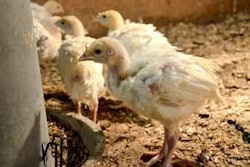Maybe it shouldn’t have paid off – selling healthier-for-you, low-calorie turkey sandwiches to the Carl’s Jr. and Hardee’s market segment. The brands’ core customers, after all, are “hungry young guys” – 18- to 34-year-old males – the ones who made the chains’ big, indulgent Six Dollar Burger one of the most successful products in fast food. Carl’s Jr. and Hardee’s, in fact, are all about “big, indulgent burgers with no apologies,” and the chains’ advertising says so: “We believe in burgers. Big, fat, juices-running-down-your-arm kind of burgers.”
CKE Restaurants, nonetheless, bucked conventional thinking by putting a line of turkey burgers, each under 500 calories, on the menus at Carl’s Jr. and Hardee’s in 2011. The move paid off with the company registering its third-most successful product launch ever. Same-store sales at Carl’s Jr. and Hardee’s in the two quarters following the launch increased between 1.8 percent and 2.5 percent (See Turkey burgers boosted sales at Carl’s Jr. and Hardee’s).
Carl’s Jr. and Hardee’s won the National Turkey Federation’sT.O.M. (Turkey on the Menu) Award for 2012 for the Charbroiled Turkey Burgers, which opened a significant new fast-food category nationally for turkey – burgers. The chains’ restaurants, meantime, were able to bring to menu comparatively cheaper-to-produce poultry protein during a period of record-high beef costs.
Make it a turkey burger!
So how does a low-calorie turkey burger fit the Carl’s Jr. and Hardee’s product strategy? Well, it almost didn’t. In the late 1990s, marketers at CKE Restaurants considered and rejected the idea of adding turkey to the menu – the concept initially was sliced turkey sandwiches and subsequently turkey burgers.
“At that point, the idea was to offer another protein for customers who did not want to eat a hamburger,” explained John Koncki, director of research and development for CKE Restaurants.
“The objective also was to provide healthier options that fit our brand image – quality, not the cheapest product but a good value for the price. Also it had to fit our advertising and market focus on 18- to 34-year-old males – heavy fast-food users, burger users. So, the struggle in our thinking was that a turkey burger was a burger, but was perceived as more for female consumers,” he said.
Men’s Health: Eat This, Not That
So, the turkey burger did not get on the menu at Carl’s Jr. or Hardee’s. That is, not until after 2010, when Men’s Health magazine approached CKE Restaurants about the “Eat This, Not That” line of diet and health advice. The magazine licenses low-calorie “Eat This” food items featured in the publisher’s content.
Koncki explained, “Men’s Health partners with people who make low-calorie food that tastes good. They came into our test kitchens for almost two full days in the spring of 2010. We put together multiple products, including turkey burgers.”
Once CKE’s meat proteins supplier, AdvancePierre Foods, delivered the turkey patty prototype, Koncki said he was confident the product would be successful. “When we first saw the turkey patty, we said, ‘This is great. This is what we want.’”
Enough production, rational contracts
Production issues had to be resolved, however, including sourcing enough turkey meat to make the volume of patties required for a national product launch.
Dick Elmore, vice president of strategic foodservice accounts for AdvancePierre Foods, explained: “After working with Carl’s Jr. and Hardee’s on the very successful Six Dollar Burger and seeing the volume of hamburger required for that product launch, I knew there would be a challenge in sourcing enough turkey meat for the Charbroiled Turkey Burger. So we set out to design the turkey patty in proportion to the natural offal of the turkey – natural proportions of breasts, thighs and tenders, and using skin for the fat.
“This approach allows us to contract for our turkey meat in a way that allows the producer to dedicate the number of birds necessary to fill our production needs. It means we can purchase most of the meat produced by the required number of birds, other than the drums, necks and wings, which the producer ordinarily makes into ground turkey or other byproducts.”
Product formulation, white meat patty
Sourcing turkey meat in ‘rational proportions’ works in another way. It results in the finished patty being predominantly white meat.
“Most consumers prefer white meat, so it makes sense for us to source the meat and formulate the patty in this way,” Elmore said.
Turkey burger’s product positioning
The collaboration with Men’s Health also proved pivotal in resolving the product positioning dilemma for the turkey burgers. Before the collaboration, the sandwich builds in development weren’t low-calorie but included bacon and cheese.
“The partnership with Men’s Health helped us to focus on both the health and the taste aspects in our product development. It also gave us the right market platform for the product,” Koncki said, referring to the highly similar target markets for Men’s Health (performance-driven 25- to 45-year-old men) and CKE’s “young, hungry guys.”
It also confirmed that CKE’s male-focused marketing could work with a low-calorie, healthy-nutrition twist, when properly executed. This focus, in fact, minimized cannibalization of existing sales and generated incremental sales by bringing in new customers.
“Part of the sales success is that we are not giving up hamburger sales to get new turkey burger sales,” Koncki said. “We are getting new customers in the restaurants, and if they are female and older, so be it.”
Still, the marketing message is coherent, Elmore observed. “This is a generation of young, hungry guys who are eating healthier through education,” he said.
Advertising with Miss Turkey
One aspect of CKE’s marketing remained true to form. “Our advertising is edgy,” Koncki said, “and we are not bashful about how we advertise our products. Beautiful women are a part of our advertising. Young men in our core demographics respond to that advertising.”
The launch of the new Charbroiled Turkey Burgers, for example, was supported with TV, radio and print ads that featured Gizem Memic, then reigning Miss Turkey from the Miss Universe pageant (see the brands’ YouTube channels at www.youtube.com/carlsjr and www.youtube.com/hardees). The campaign generated such a high response that there were standees in the restaurants during the turkey burgers’ launch.
Sales and marketing issues remain
Not every question about the Charbroiled Turkey Burger has been answered. Sales of the turkey burgers have been more sustained in the Carl’s Jr. restaurants, which are located in the Western U.S., than in the Hardee’s units, which are located in the Eastern U.S. At the time of the interview with Koncki, the future of the Charbroiled Turkey Burger at Hardee’s had not been decided.
“On the West Coast, the perception is that people have a stronger interest in eating healthier and engaging in a healthier lifestyle,” Koncki said. “I believe that is part of the reason why sales of the turkey burgers have been more sustained at Carl’s Jr.”
Meantime, the Charbroiled Turkey Burger is a permanent part of the menu at Carl’s Jr., and product line extensions are being planned there.
Future for turkey consumption positive
“I think other national restaurant chains will offer turkey burgers at some time in the future,” Koncki said. New entrants with national distribution, however, could pose challenges for industry supply. Dedicated turkey production by the industry would be needed if other national chains were to enter the segment, Koncki and Elmore agreed.
“Turkey is a great meat protein with many positive qualities,” Koncki concluded. “It is affordable. It has good connotations with consumers as a leaner, healthier protein. Consumption and usage of turkey will continue to expand in the future.”



















